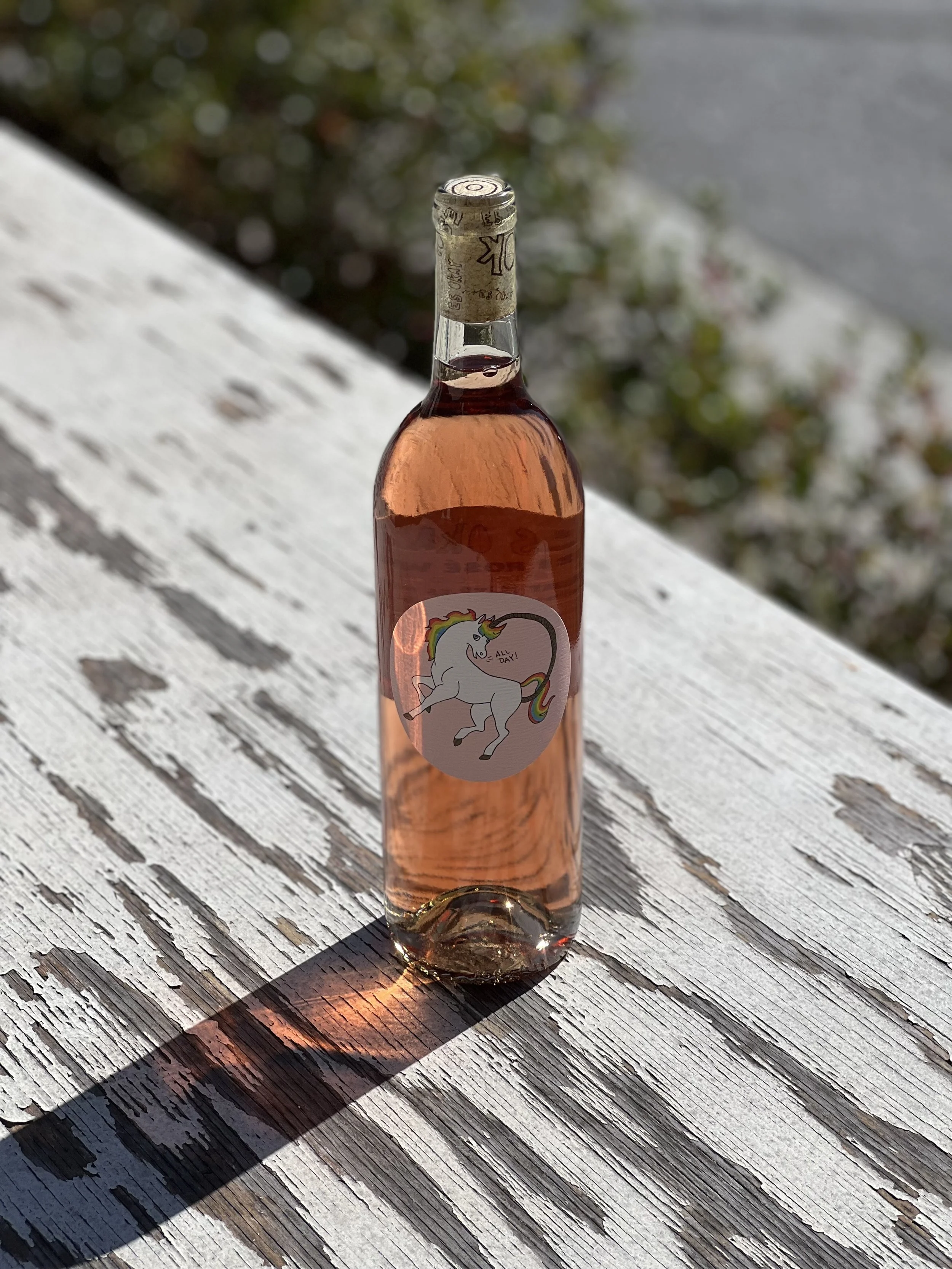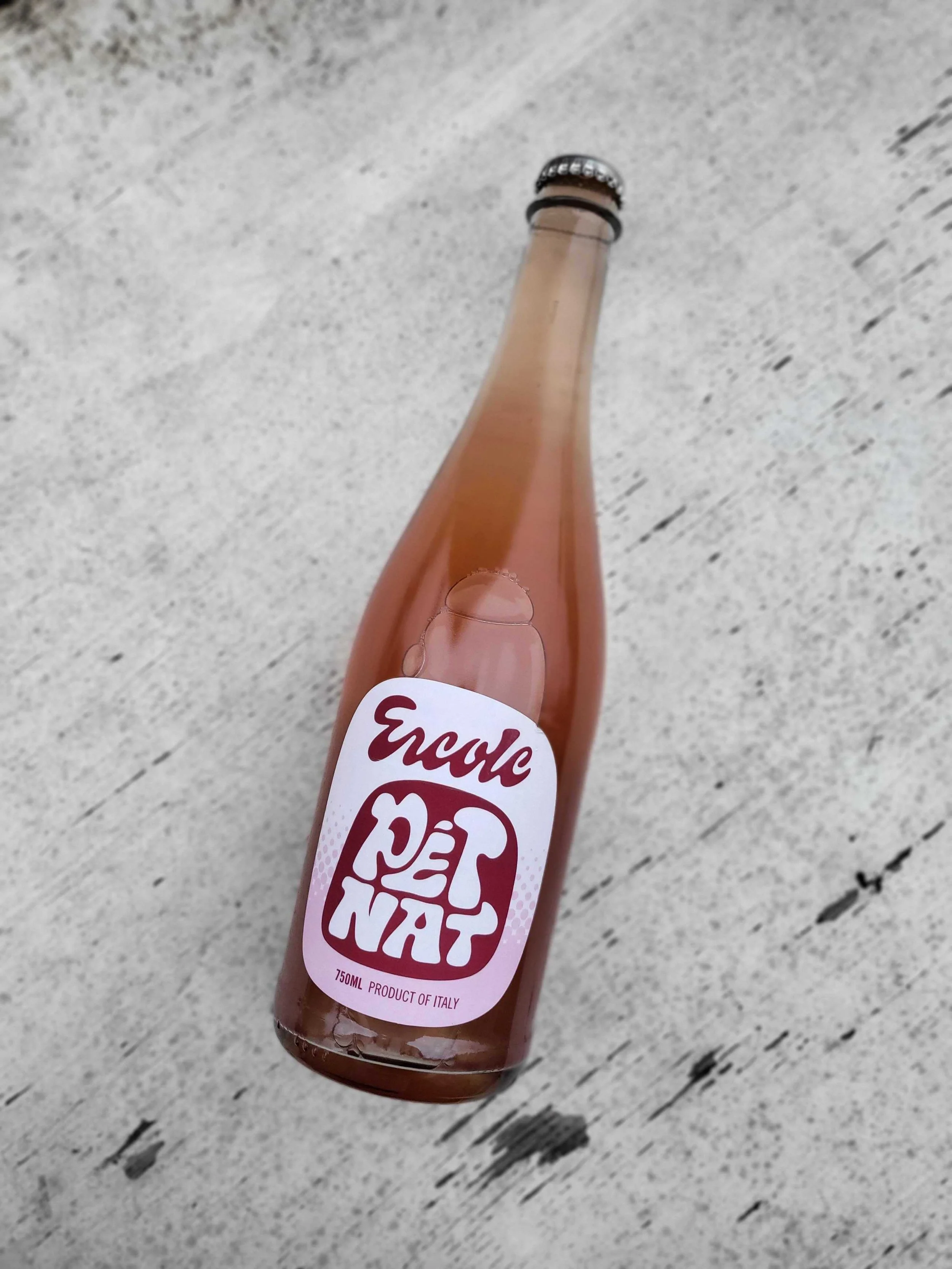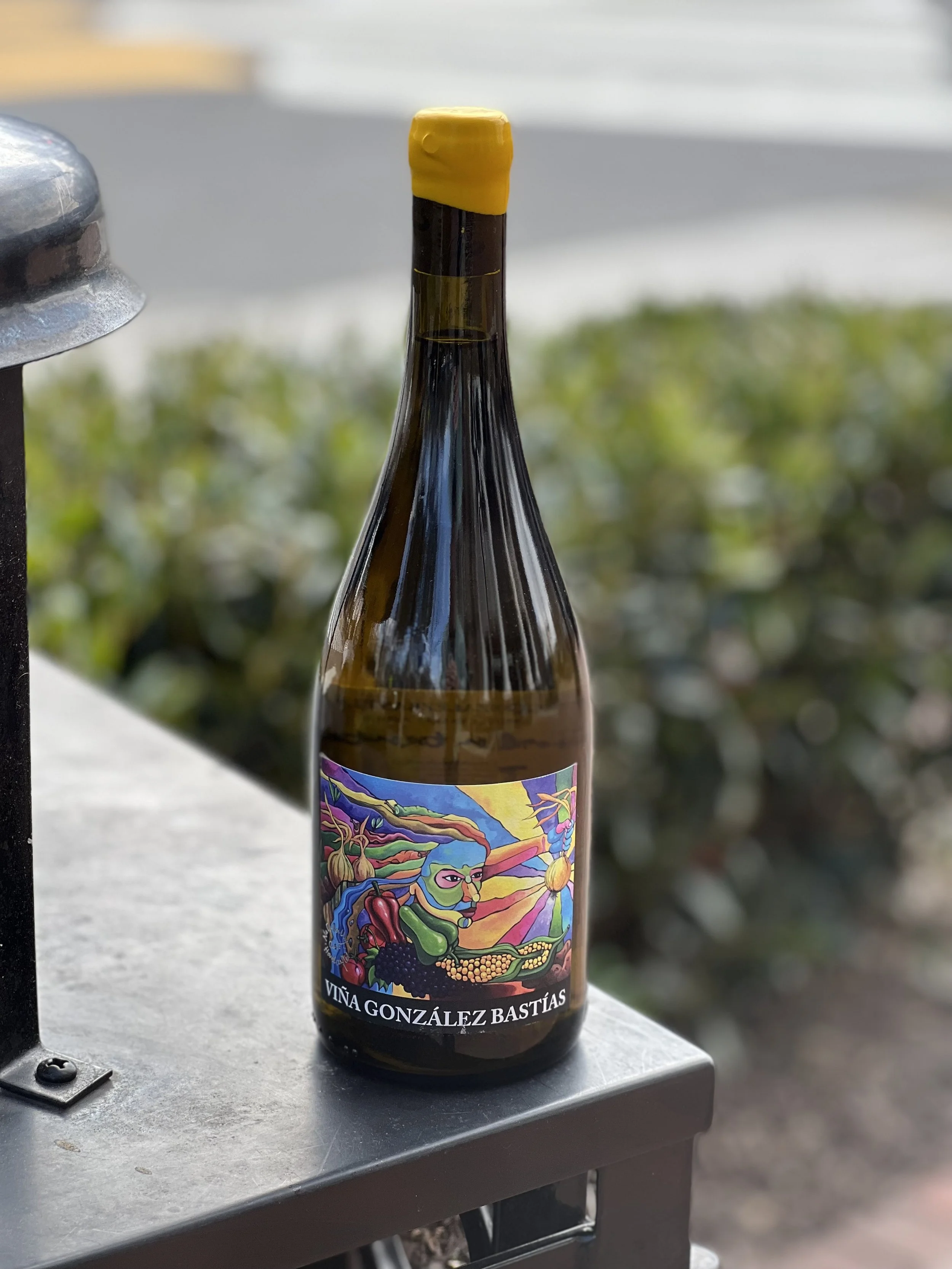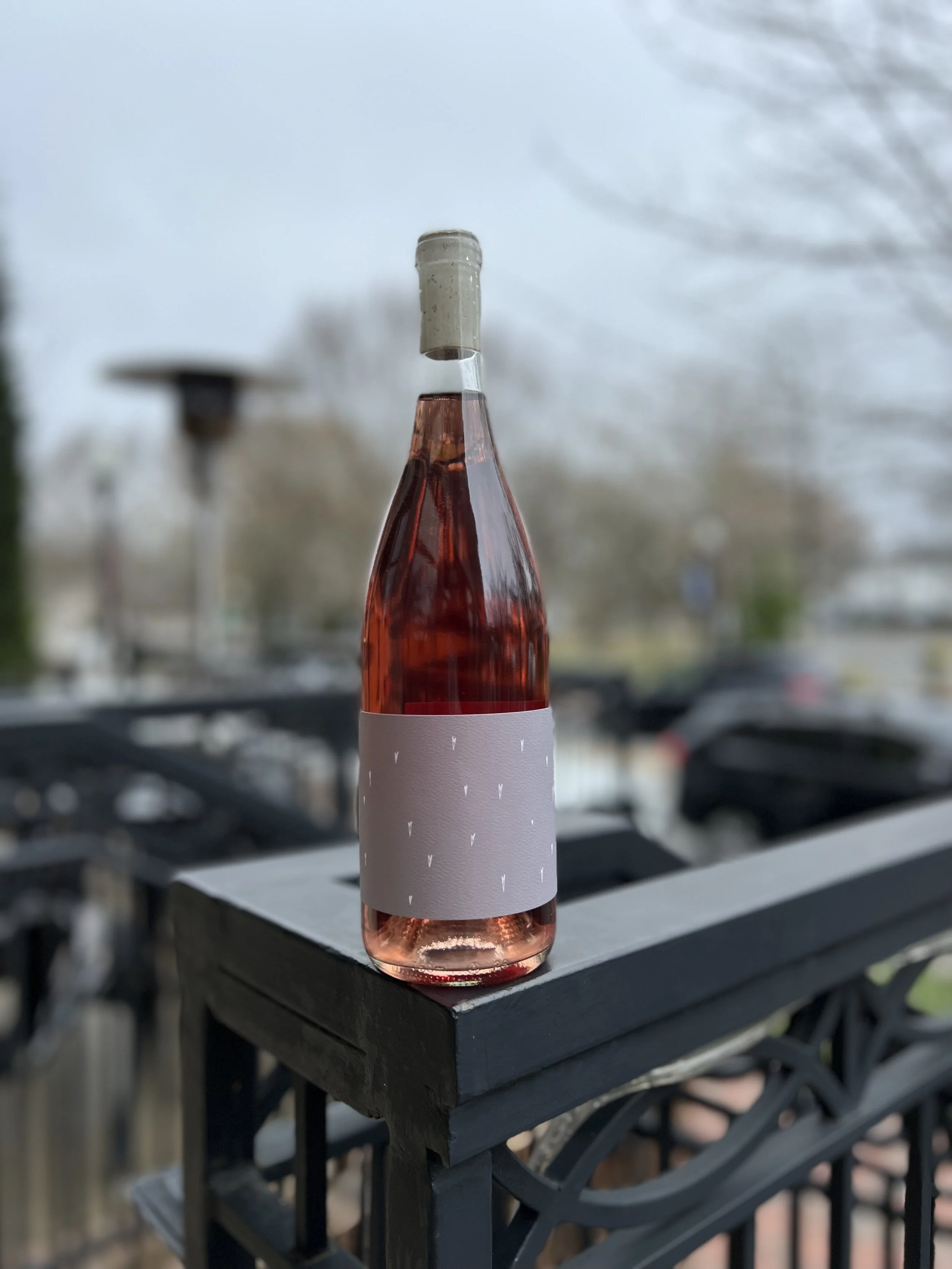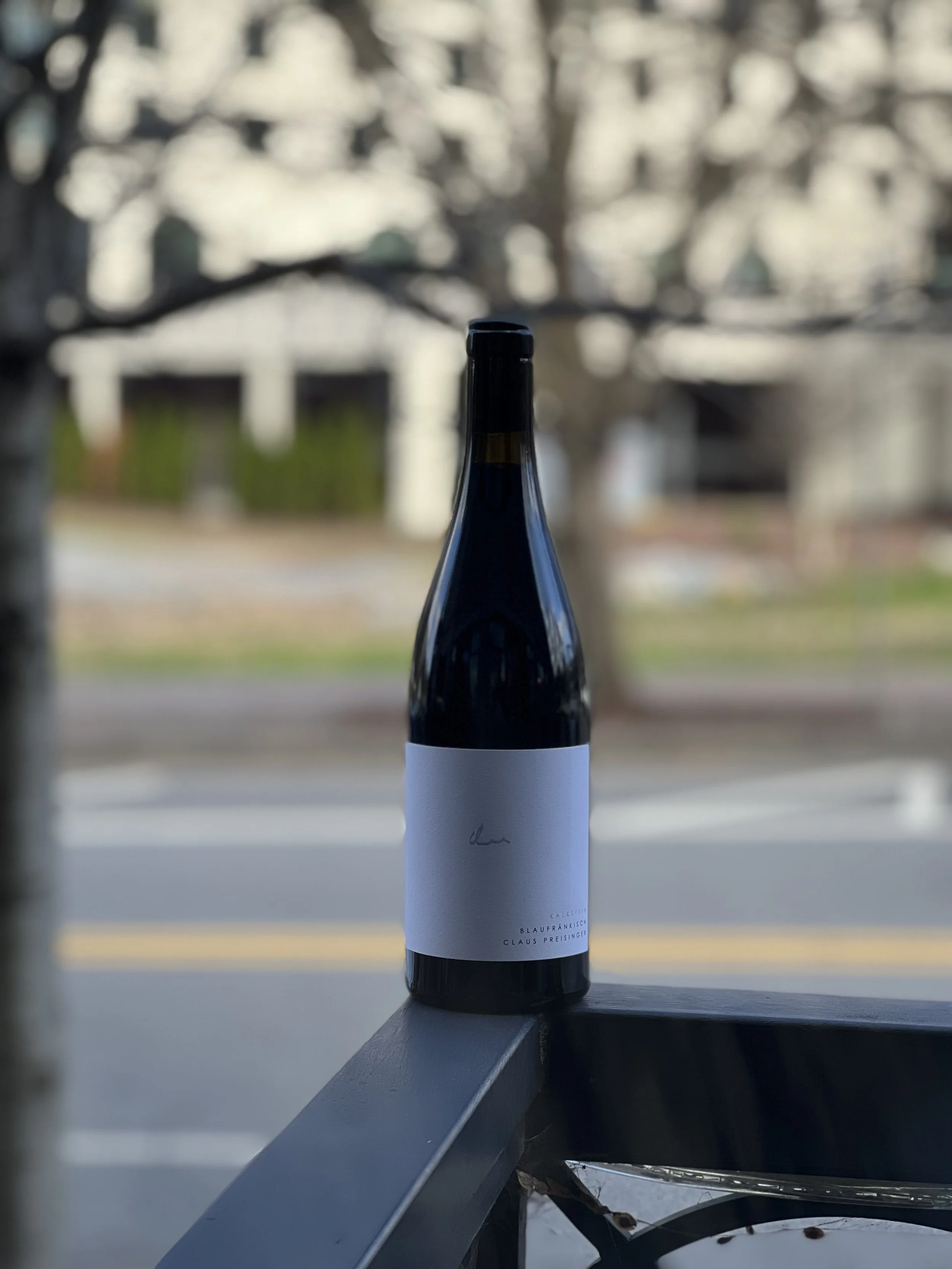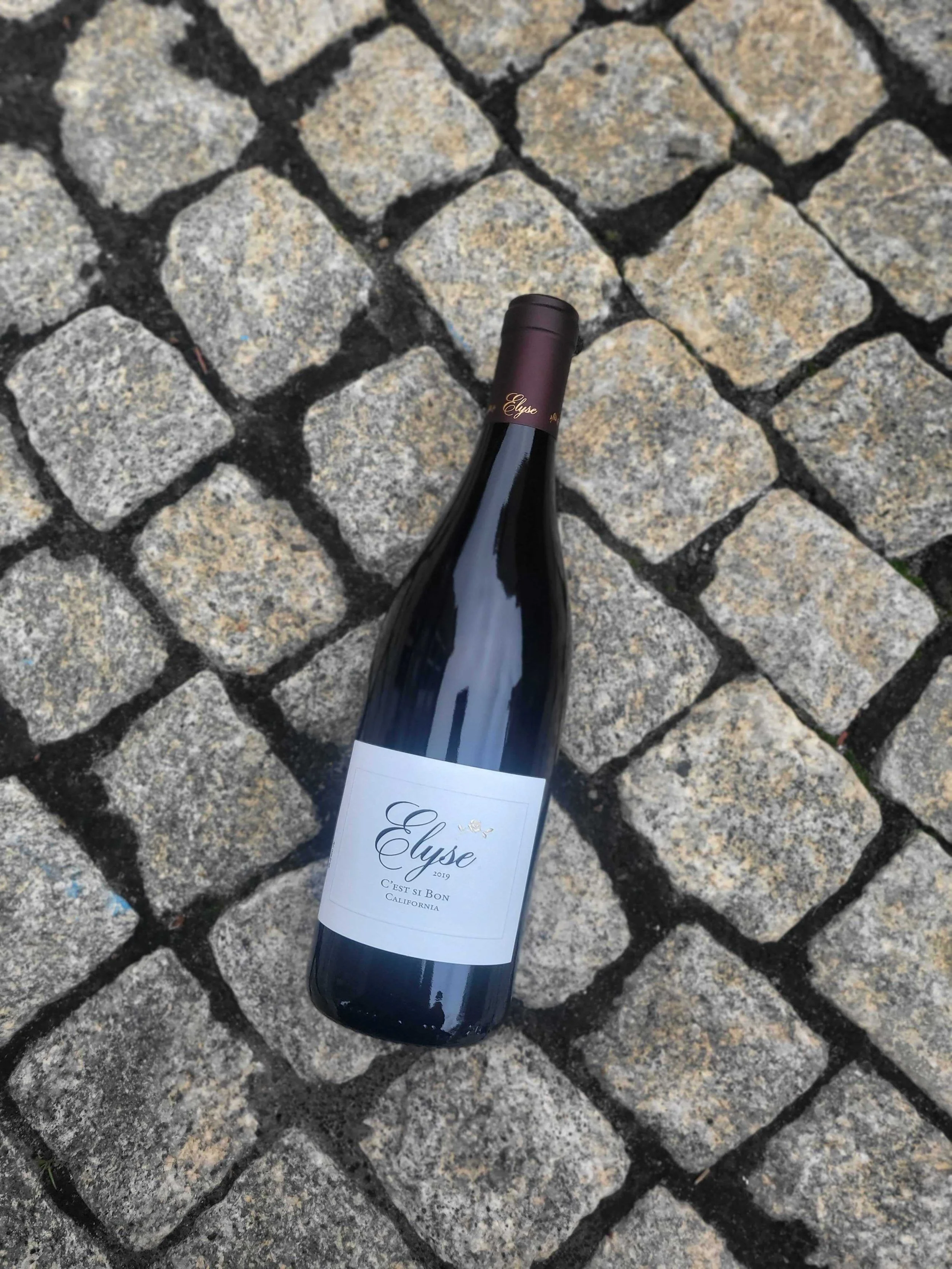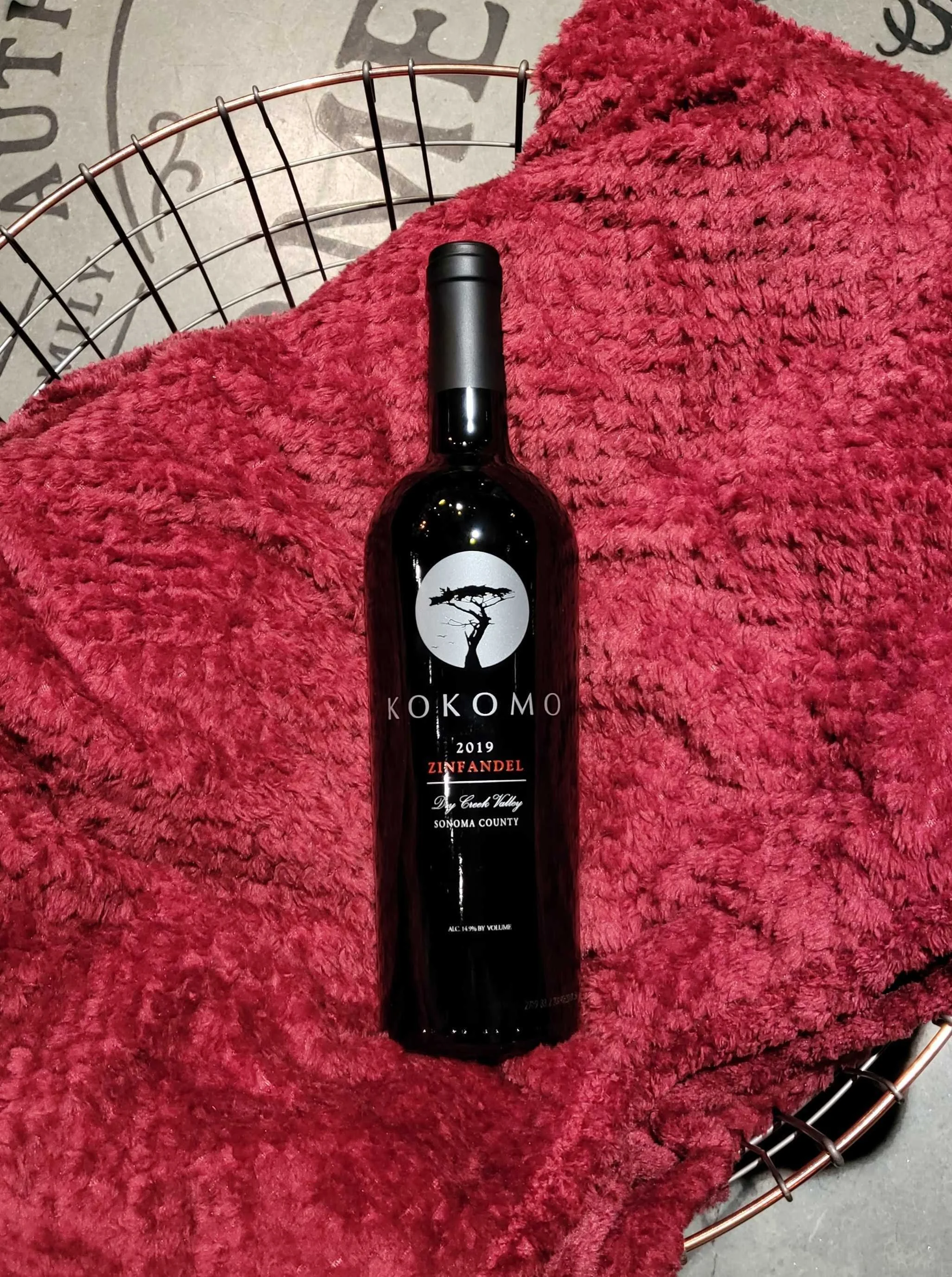UNDERGROUND WINE SOCIETY: March
SCROLL BELOW TO FIND INFORMATION ON YOUR WINES!
The Explorer
$49/month
White/Rosé
Rootdown Cellars
“Es Okay”
Grapes: Pinot Gris (20%), Cinsault (20%), Cabernet (8%), Thompson Seedless (52%)
Region: Cole Ranch, California
Wine Notes: “Always fun to make this wine because I get to play with different varieties and ferment them in a manner that’s more…. “what if?” This Pinot Gris this year was not harvested by hand this year but by machine (my first time), so I fermented everything on skin for texture and color. Cab Rosé? Why not. I’ve never made one before, so I was curious. Cinsault? Oh hells yeah. Always one of my favorite grapes for Rosé. I also found some Thomson Seedless that was a gamble, but actually works! Never in my life would I believe I’d work with Thompson Seedless outside of a grocery store.“
Vignobles Denis Anjou
Grapes: Chenin Blanc (100%)
Region: Loire Valley, France
Wine Notes: “The family’s motto is ‘quality and respect for life.’ As such, they not only pay careful attention to the interplay between the soil and vine, but also to the care and maintenance of those soils. They are committed to both the short-term production of quality wines and the long-term health of the land. They avoid the use of chemical treatments and use environmentally friendly practices, such as grassing over the vine rows or working the soil, to avoid the use of weed killer.“
Fruit carefully selected on sorting table; 12 hours maceration; fermentation at controlled temperature of 64-68,° Pairs well with creamy pastas, fish in butter sauces and vegetables.
Ercole Pet Nat
Grapes: Chardonnay (60%) & Pinot Noir (40%)
Region: Loire Valley, France
Wine Notes: Pét-Nat is an ancient method in which the wine is bottled before primary fermentation has concluded. As the yeast in the bottle converts the sugar in grape juice into alcohol, bubbles develop naturally while fermentation finishes in bottle. The result is at once wildly alive, uniquely approachable, and delightfully refreshing. This raw, unfiltered sparkling wine boasts electric strawberry and red raspberry along with a hint of fresh clove.
Gonzalez Bastias Tierra Madre
Grapes: Semillion (50%), Torontel (50%)
Region: San Javier, Maule
Wine Notes: Vines: Granitic soils, on the river Banks of the Maule River, no irrigation, rootstock, head/goblet trellis system. Winemaking: Manual crushing with a “Zaranda de Coligüe” (Bed of bamboo sticks) , both grapes are crushed and the juice is recovered to ferment with its native yeast. Aging: 3 months in refurbished Chilean Raulí Fudre, manual bottling, no filtration, only first juice.
Day Wines “Vin de Days” L’Orange
Grapes: Müller Thurgau (43%); Riesling (36%); Gewürztraminer (14%); and Pinot gris (7%)
Region: Willamette Valley, Oregon
Wine Notes: Grapes are destemmed into 1.5-ton fermenters, with all varietals co-fermented from the outset. No sulfur at crush, and fermentation kicks off spontaneously. We keep the wine fermenting on grape skins throughout primary fermentation, until dry—about three weeks of skin-contact time—which builds structure and enhances the depth of the wine’s eventual aromatic and flavor profiles. When dry, the wine is racked and pressed into neutral oak barrels to age for four months, where it completes malolactic fermentation (MLF). This wine is unfined and unfiltered, and only a minimal amount of sulfur is used post-MLF, just before bottling
La Morette Lugana Mondolara
Grapes: Turbiana (100%)
Region: Lugana, Italy
Wine Notes: After a very soft crushing, and thermo-controlled vinification, we obtain this elegant wine. Lugana Mandolara has got a pale straw-yellow colour, with green reflections. Its characteristic balanced bouquet is pleasant and fresh, with flower sensations. At taste it is attractively fruity, with apple and peach hints characterized, at the end, by a trace of bitter almonds. Its delicate and light flavor make it the perfect companion with a wide range of dishes from hors d’oeuvres to fish. Recommended serving temperature is 10° C; uncork immediately before serving.
Broc Cellars Love Rosé
Grapes: Valdiguié (97%), Zinfandel (2%), Trousseau (1%)
Region: Mendocino County, California
Wine Notes: We foot stomped all the fruit and left it on the skins for 12 hours. Then it was pressed into stainless steel tank where all three varieties fermented together for just over 14 days. The result is a 100% finished wine. This means it fermented until it went dry using only native yeasts and went through spontaneous malolactic fermentation. Each variety brings a unique quality to the wine - spice comes from the Zinfandel, acidity from the Valdiguié and texture from the Trousseau.
Stolpman Vineyards
Grapes: Sauvignon Blanc (100%)
Region: Ballard Canyon, California
Wine Notes: It’s all about the Limestone! The great Sauvignon Blanc vineyards of the Loire Valley lie on white rock, so we decided to plant an experimental 2 acre block on our Limestone outcropping. After selling the crop for a few vintages, Stolpman bottled its first Sauvignon Blanc from the 2008 vintage. We fell in love with the wine and have since planted 8 more acres. We take great pride in treating our Sauvignon Blanc like every other varietal in the vineyard. We withhold irrigation to ensure concentration of flavor and layers of interesting textures. 2 of the 10 acres are own-rooted high density vineyards, and these low yielding vineyards grant richer texture and heightened complexity to the overall cuvee.
Reds
Claus Preisinger Blaufränkisch Kalkstein
Grapes: Blaufränkisch (100%)
Region: Burgenland, Austria
Wine Notes: “Certified Organic and Biodynamic. Aged for eight months in large neutral barrels, Spontaneous Fermentation, Vinified in Stainless steel tanks, unfined and unfiltered.”
Altos Las Hormigas Terrior Uco Valley
Grapes: Malbec (100%)
Region: Mendoza, Argentina
Wine Notes: Grapes from different vineyards are vinified separately before the final blend. The grapes are selected from a double selection table before going into small stainless steel tanks. The alcoholic fermentation begins with indigenous yeasts at 24-28°C, for 12 days. Each tank is tasted three times a day to determine what is needed. It is aged for 18 months in concrete pools (75% of the wine) and untoasted large oak foudres (25% of the wine). Ageing for 6 months in the bottle. It has a great grip on the palate, with layered tannins and a balanced, long finish. Ideal to pair with Mediterranean cuisine and red meats.
Cantina Sociale di Gattinara
Grapes: Nebbiolo (100%)
Region: Piedmonte, Italy
Wine Notes: Hand-harvested grapes are destemmed prior to a soft pressing. Native fermentation takes place in a combination of large oak casks and cement tanks without temperature control. In these vessels, maceration lasts up to 30 days. Secondary fermentation occurs naturally in the same vessels.
Elyse Winery C’est Si Bon
Grapes: Grenache (52%), Mourvèdre (20%), Zinfandel (10%), Carignane (10%), Charbono (8%)
Region: Sonoma, Mendocino, Lodi, & St. Helena, California
Wine Notes: “A combination of unique vineyard sites, each parcel adds to the layers of this wine and its polished, approachable character. Spanning four appellations of Northern California, this wine is proof that sometimes the sum is greater than its parts. Aged 11 months in French oak (30% new). Subtle soft tannins allow this verastile wine to be served with a slight chill and enjoyed in the summer months.
Cote Noir
Grapes: Grenache (40%), Marselan (30%), Merlot (20%), Mourvèdre (10%)
Region: Rhone, France
Wine Notes: From a family of growers, Julien MusJacques studied Winmeaking in Beaune, Burgundy. He first converted the 4.5 Ha Estate to certified organic farming methods in 2005, then to biodynamic in 2015. The soils are made up of Miocene blue-clay, covered with a layer of galets. The vines are farmed without the use of any chemical fertilizers, weed killers, or insecticides. The grapes are harvested by hand and each bunch undergoes a selection process. Fermentation is spontaneous with native yeasts.
Chateau La Rame Bordeaux Rouge
Grapes: Merlot (60%), Cabernet Sauvignon (40%)
Region: Bordeaux, France
Wine Notes: Fermentation: After total destemming, wine ferments with indigenous yeasts in stainless-steel tanks. Cuvaison lasts 3-4 weeks. • Pressing: Pneumatic pressing • Time on Lees: 1 month • Malolactic Fermentation: Spontaneous, in tank following alcoholic fermentation • Élevage: 18 months in stainless-steel tanks (90%) and 225-l neutral oak barrels (10%) • Press Wine: Blended after malolactic • Fining and Filtration: Bentonite fining, diatomaceous earth filtration • Sulfur: Applied after malolactic and at bottling, 20-25 mg/l free
Alfredo Maestro “El Rey de Glam”
Grapes: Garnacha Tinta (100%)
Region: Ribera del Duero, Spain
Wine Notes: The grapes were harvested by hand in the second week of September, then go through carbonic maceration in stainless steel without crushing or destemming. The juice ferments with native yeasts in stainless steel tanks.The wine finishes fermentation, including malolactic, then is bottled without additives.
La Comarcal
Delmoro Tinto
Grapes: Garnacha (85%) & Syrah (15%)
Region: Venta del Moro, Spain
Wine Notes: Each variety is hand-harvested separately. Garnacha and Syrah are fermented separately in stainless steel tanks with native yeasts, followed by eight months aging in stainless steel for Garnacha and concrete tanks for Syrah. The two varieties are then blended and bottled.
Ladeiras do Xil Gaba do Xil Tinto
Grapes: Mencía (70%) & Merenzao (30%)
Region: Galicia, Spain
Wine Notes: Gaba do Xil is named for the hillsides of the Sil River, which is the lifeblood of the region. They are the estate-grown red and white village wines, an introduction to the limited production single cru wines of Ladeiras do Xil. Gaba do Xil offers the drinker an incredible value for handmade Galician wines for everyday drinking, which rival the wines of similar quality in Burgundy and Beaujolais. The red wine is produced from certified organic, mencía, and merenzao grapes from estate vineyards. The primary vineyard lies inland at 400-500m in altitude, near the town of Larouco, which has an Atlantic influence due to the location in a valley that forms an outlet to the sea. The blend also contains grapes from estate vineyards in Santa Cruz and Las Ermitas. Gaba do Xil is a wonderful expression of an Atlantic influenced red wine that is always fresh, expressive, and food-friendly. Wines are made with low intervention and minimal sulfur at bottling. Vinification – After a manual harvest and grape selection in the vineyard, the wine is fermented with native yeasts in stainless steel tanks. It is then aged, also in stainless steel, for twelve months before bottling.
The Connoisseur
$98/month
Whites
Stolpman Vineyards
Grapes: Sauvignon Blanc (100%)
Region: Ballard Canyon, California
Wine Notes: It’s all about the Limestone! The great Sauvignon Blanc vineyards of the Loire Valley lie on white rock, so we decided to plant an experimental 2 acre block on our Limestone outcropping. After selling the crop for a few vintages, Stolpman bottled its first Sauvignon Blanc from the 2008 vintage. We fell in love with the wine and have since planted 8 more acres. We take great pride in treating our Sauvignon Blanc like every other varietal in the vineyard. We withhold irrigation to ensure concentration of flavor and layers of interesting textures. 2 of the 10 acres are own-rooted high density vineyards, and these low yielding vineyards grant richer texture and heightened complexity to the overall cuvee.
La Morette Lugana Mondolara
Grapes: Turbiana (100%)
Region: Lugana, Italy
Wine Notes: After a very soft crushing, and thermo-controlled vinification, we obtain this elegant wine. Lugana Mandolara has got a pale straw-yellow colour, with green reflections. Its characteristic balanced bouquet is pleasant and fresh, with flower sensations. At taste it is attractively fruity, with apple and peach hints characterized, at the end, by a trace of bitter almonds. Its delicate and light flavor make it the perfect companion with a wide range of dishes from hors d’oeuvres to fish. Recommended serving temperature is 10° C; uncork immediately before serving.
Reds
Switchback Ridge
Grapes: Merlot (90%) & Cabernet Sauvignon (10%)
Region: Napa Valley, California
Wine Notes: Harvest Dates: September 7 & 8, Alcohol: 15.2%, Length & Type of Aging: 18 months; 100% French Oak.
Switchback Ridge is named for the winding trails in the hills above the vineyard that John explored as a child. Today Kelly Peterson continues the legacy that began with her great-grandfather, Mads, over a hundred years ago.
Kokomo
Grapes: Zinfandel (100%)
Region: Sonoma County, California
Wine Notes: Our Dry Creek Zinfandel is comprised of fruit from two different vineyards: Mizany Vineyard and Pauline’s Vineyard. Although both are located in Dry Creek Valley, the different vineyards bring two unique wines with their own distinct personalities. Mizany Vineyard is planted to the DuPratt clone of Zinfandel, which has a spicier character with a darker fruit profile. It is a field blend comprised of Zinfandel with a 5 % blend of Carignan, Alicante Bouschet, and Petite Sirah, much like the first vineyards planted in Dry Creek Valley. Pauline’s Vineyard is planted to the old mother-clone of Dry Creek. This vineyard is on the valley floor in the famous Cortina gravelly loam. We take a lot of pride that Dry Creek Valley is known to grow the best Zinfandel in the world, and we feel like blending two different vineyards gives us an overall picture of the special terroir that is Dry Creek Valley.
Grapes: Cabernet Franc (100%)
Region: Loire, France
Wine Notes: Only three of Pépière's 43 certifed-organic hectares of vines are planted to black grapes: Côt and Cabernet Franc (known locally as Breton). They are in the 10-hectare "home" vineyard in Clisson, where the rocky, granite-rich soils yield top-tier Melon de Bourgogne; the black grapes are in a section with a gentle slope and southwestern exposure. As with the Côt, the Cabernet Franc is harvested by hand, destemmed and crushed, with only the free-run juice used for the wine. It is fermented spontaneously with indigenous yeasts, followed by around five months of aging in stainless steel. The wine is classified as a Vin de Pays de la Loire, as there is no allowance for red wine in the Muscadet AOC.
Williams Selyem
Grapes: Pinot Noir (100%)
Region: Sonoma County, California
Wine Notes: The 2020 growing season started out very dry and bud break was delayed. Early spring rains recharged the soil profile, but periods of extreme cold caused many frost events throughout the Russian River Valley. Late spring yielded ample sunshine and moderate temperatures, and the plants responded very well with excellent canopy growth. The season ended up approximately 12% warmer than average and did not have any heat spikes until August. Harvest started in haste on August 12, ahead of an extreme heat wave. On the night of August 17, the weather changed and there was a rare dry lightning storm that sparked a fire on a hillside in remote west Sonoma County; later named the Walbridge Fire. In the Russian River Valley, it took a number of days for smoke to settle. Based on test results for smoke taint on the grapes, several coastal vineyards were not picked. For the vineyards which were picked, either before the fire or before the smoke settled, the result was concentrated wines with a darker, more brooding complexion. The polish of the tannin, coupled with excellent concentration, should allow for a wide drinking window.
Remelluri Reserva 2006
Grapes: Tempranillo (100%)
Region: Rioja, Spain
Wine Notes: “One of five cuvées that are produced identically, with the same fermentation regimes of wild yeast and small fermentation vessels, followed by aging in blends of cooperage with 12% new oak in each. The result is a fascinating journey up the Dundee Hills, from our lowest elevation Sisters vineyard at 220’ up to our highest elevation Daphne vineyard at 860’. Each wine reflects facets of soil, site, exposure, and vine age that together capture a precise portrait of how variations in place can influence Pinot noir...”

